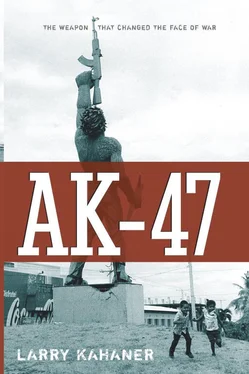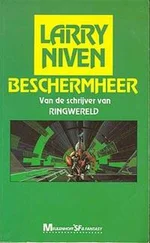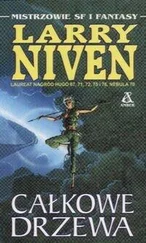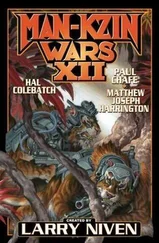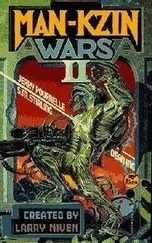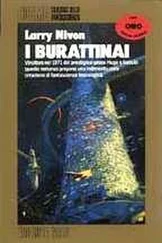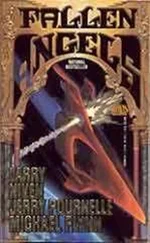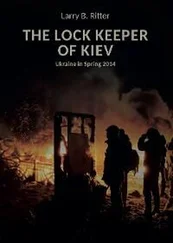Larry Kahaner - AK-47
Здесь есть возможность читать онлайн «Larry Kahaner - AK-47» весь текст электронной книги совершенно бесплатно (целиком полную версию без сокращений). В некоторых случаях можно слушать аудио, скачать через торрент в формате fb2 и присутствует краткое содержание. Город: Hoboken, Год выпуска: 2007, ISBN: 2007, Издательство: John Wiley & Sons, Inc., Жанр: История, military_history, на английском языке. Описание произведения, (предисловие) а так же отзывы посетителей доступны на портале библиотеки ЛибКат.
- Название:AK-47
- Автор:
- Издательство:John Wiley & Sons, Inc.
- Жанр:
- Год:2007
- Город:Hoboken
- ISBN:9780470315668
- Рейтинг книги:3 / 5. Голосов: 1
-
Избранное:Добавить в избранное
- Отзывы:
-
Ваша оценка:
- 60
- 1
- 2
- 3
- 4
- 5
AK-47: краткое содержание, описание и аннотация
Предлагаем к чтению аннотацию, описание, краткое содержание или предисловие (зависит от того, что написал сам автор книги «AK-47»). Если вы не нашли необходимую информацию о книге — напишите в комментариях, мы постараемся отыскать её.
AK-47 — читать онлайн бесплатно полную книгу (весь текст) целиком
Ниже представлен текст книги, разбитый по страницам. Система сохранения места последней прочитанной страницы, позволяет с удобством читать онлайн бесплатно книгу «AK-47», без необходимости каждый раз заново искать на чём Вы остановились. Поставьте закладку, и сможете в любой момент перейти на страницу, на которой закончили чтение.
Интервал:
Закладка:
Bolton capped his remarks by stating that the United States would not commit to any binding agreements.
As he uttered his last words, most of the audience sat in stunned silence, astounded at how sharp and un-UN-like his presentation had been. Moreover, insiders who had read his speech the day before were totally shocked that he had changed it at the last minute to make it even more venomous. It was not the same speech approved for delivery by the State Department.
One group was not quiet. As members of the UN sat dumbfounded by Bolton’s harsh words, cheers rose from the gallery where National Rifle Association representatives sat. To all present, it was clear that Bolton had carried the gun lobby’s message.
After the meeting ended, Georgia congressman Bob Barr held a news conference. This move also surprised attendees, as no one could recall another time when a U.S. legislator had convened such an event at the UN. Barr, an NRA board member, reiterated Bolton’s “Red Line” issues: “If the conference can concentrate on the central issue of the flow of illicit weapons then we’re in agreement. But if it drifts off into areas that are properly the area of national level decision-making, then I think there will be difficulties.” Barr threatened to cut funding to the United Nations if the body did not limit itself to the issue of illegal weapons flows.
As he hailed a cab outside the UN building, Barr pointed to a bronze sculpture titled Non-Violence by Swedish artist Carl Fredrik Reutersward, which depicts a .45-caliber pistol with a knot tied in its barrel. The pretzel-like symbol struck Barr as ridiculous. “You’d at least think they’d put an AK-47 out there. That’s a standard firearm.”
After Bolton gave his bombshell speech, he returned to Washington, leaving Lincoln Bloomfield Jr., the State Department’s assistant secretary for political-military affairs, to handle the remainder of the conference. Although Bloomfield was a twelve-year veteran of the State Department, he had been in his current job for less than two months. Representatives from other nations viewed Bolton’s hard-line speech, quick exit, and replacement by the inexperienced Bloomfield as dismissive and disrespectful to the United Nations and the conference’s work.
Bolton’s remarks had done their job. They stopped cold the UN’s move to limit illegal small-arms trafficking, which had begun in earnest after the breakup of the Soviet Union.
TO UNITED NATIONS POLICYMAKERS, it was becoming clear that small arms were not just about little tribal wars. They were directly blamed for the deaths of more than half a million people annually both from armed conflict and domestic violence. They enabled drug wars, terrorism, and insurgencies. But small arms did much more long-term damage to countries. They increased the worldwide burden on health care systems and allowed the spread of infectious diseases by preventing medical caregivers from entering conflicted areas. Excesses of small arms led to severe economic consequences by destabilizing governments and destroying economic infrastructures. After having dealt with the specter of nuclear weapons for the previous decades, and with that shadow now gone, the UN had turned its attention to small arms and how to destroy them.
Small arms were the UN’s new bogeyman.
Individual countries and regional groups had tried with mixed results to decommission large numbers of small arms. Most of these guns were remnants of past conflicts and now were embedded in the culture. In other areas, they were owned for protection in lawless regions untouched by government control that offered open terrain for bandits and thieves. For example, in areas like Kenya’s Northeastern Province, which shares a four-hundred-mile border with Somalia, small arms used as protection were so ingrained in the day-to-day lives of the indigenous clans that efforts to have people turn them in, mainly AKs, proved unsuccessful. At the time of the UN conference, the only weapons relinquished there were ancient, unworkable, or barely able to function. “We are finding that if a weapon is surrendered voluntarily, that person has already acquired a better one,” said Maurice Makhanu, provincial commissioner. This reluctance to turn in small arms, especially cheap and durable AKs, was common throughout the world, a point not lost on UN officials.
In a presentation a year earlier about the role of the UN in the twenty-first century, Secretary-General Kofi Annan had presented the world body’s strongest attack on small arms when he said, “The death toll from small arms dwarfs that of all other weapons systems—and in most years greatly exceeds the toll of the atomic bombs that devastated Hiroshima and Nagasaki. In terms of the carnage they cause, small arms, indeed, could well be described as ‘weapons of mass destruction.’ Small arms proliferation is not merely a security issue; it is also an issue of human rights and of development. The proliferation of small arms sustains and exacerbates armed conflicts. It endangers peacekeepers and humanitarian workers. It undermines respect for international humanitarian law. It threatens legitimate but weak governments and it benefits terrorists as well as the perpetrators of organized crime.”
For many U.S.-based pro-gun groups, the United Nations now had gone too far, and the agenda against SALW threatened their Second Amendment right to bear arms. Reports circulated throughout the pro-gun community that the UN was considering a one-gun-per-person strategy in addition to a ban on handgun possession by anyone other than government officials. There were rumors of plans for worldwide licensing of firearms with a database kept at the United Nations. None of these assertions were true, but many gun owners in the United States believed they were, and they inundated the United Nations with letters and phone calls voicing their concerns.
Even before the conference began, UN officials were forced to respond to the deluge with a public statement outlining their position. They reiterated that they were not planning to take away privately owned guns and that the conference’s focus was on illicit trade in small arms and not the legal trade, manufacture, or ownership of weapons. They even cited the UN’s own charter, which prohibited it from interfering in matters within a member state’s domestic jurisdiction. This included gun laws.
The UN statement also noted that the organization was inviting 177 nongovernmental organizations (NGOs) from five continents to offer their views and opinions. These included anti-gun groups such as the International Action Network on Small Arms (IANSA) as well as pro-gun groups such as the National Rifle Association. All NGOs had the same rights and privileges.
Despite these clarifications, the U.S. pro-gun groups’ fears were not assuaged, and they pressed Bolton to take his hard line at the United Nations. Not that Bolton needed any persuading. He was widely known as a strict constitutionalist and someone who had shown great disdain and disrespect in the past for the United Nations. “If the UN secretary [secretariat] building in New York lost ten stories, it wouldn’t make a bit of difference,” he had told a conference seven years earlier. “There is no such thing as the United Nations. There is an international body that occasionally can be led by the only real power left in the world, and that is the United States when it suits our interest and we can get others to go along.”
At a press conference during the UN meeting, Bolton refuted the constant din of allegations that his delegation’s position was scripted by pro-gun groups. “I am not a member of the NRA. I have never been a member. Let me start over,” he said firmly. “I am not now and never have been a member of the NRA, and I have no idea who on the delegation is a member of the NRA. The NRA did not write our position and that’s that.”
Читать дальшеИнтервал:
Закладка:
Похожие книги на «AK-47»
Представляем Вашему вниманию похожие книги на «AK-47» списком для выбора. Мы отобрали схожую по названию и смыслу литературу в надежде предоставить читателям больше вариантов отыскать новые, интересные, ещё непрочитанные произведения.
Обсуждение, отзывы о книге «AK-47» и просто собственные мнения читателей. Оставьте ваши комментарии, напишите, что Вы думаете о произведении, его смысле или главных героях. Укажите что конкретно понравилось, а что нет, и почему Вы так считаете.
